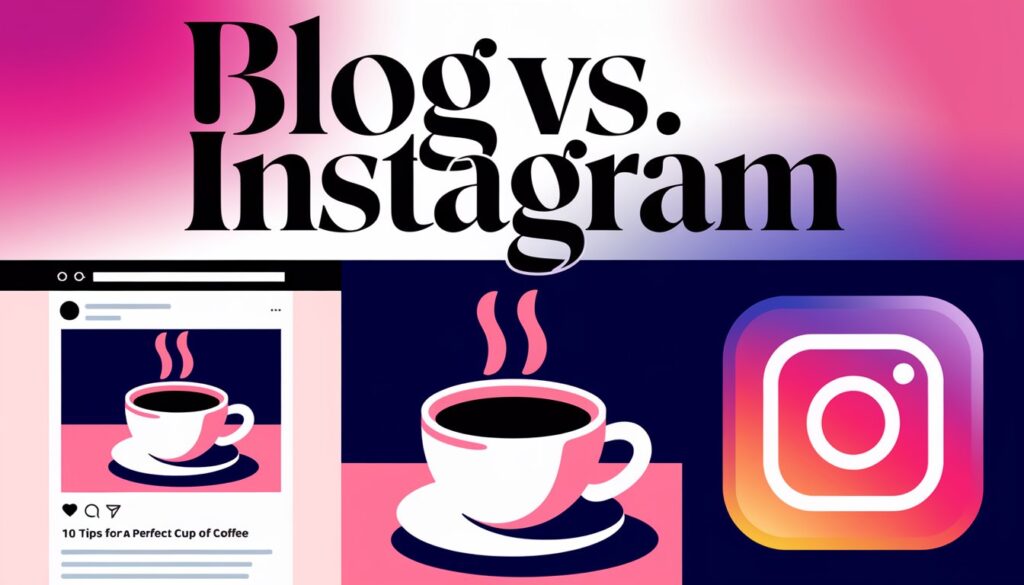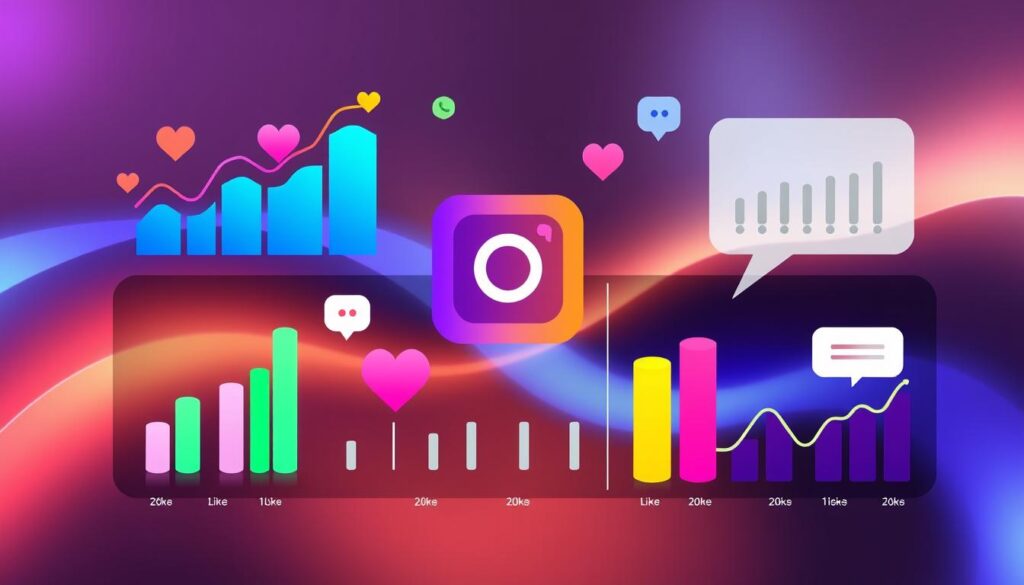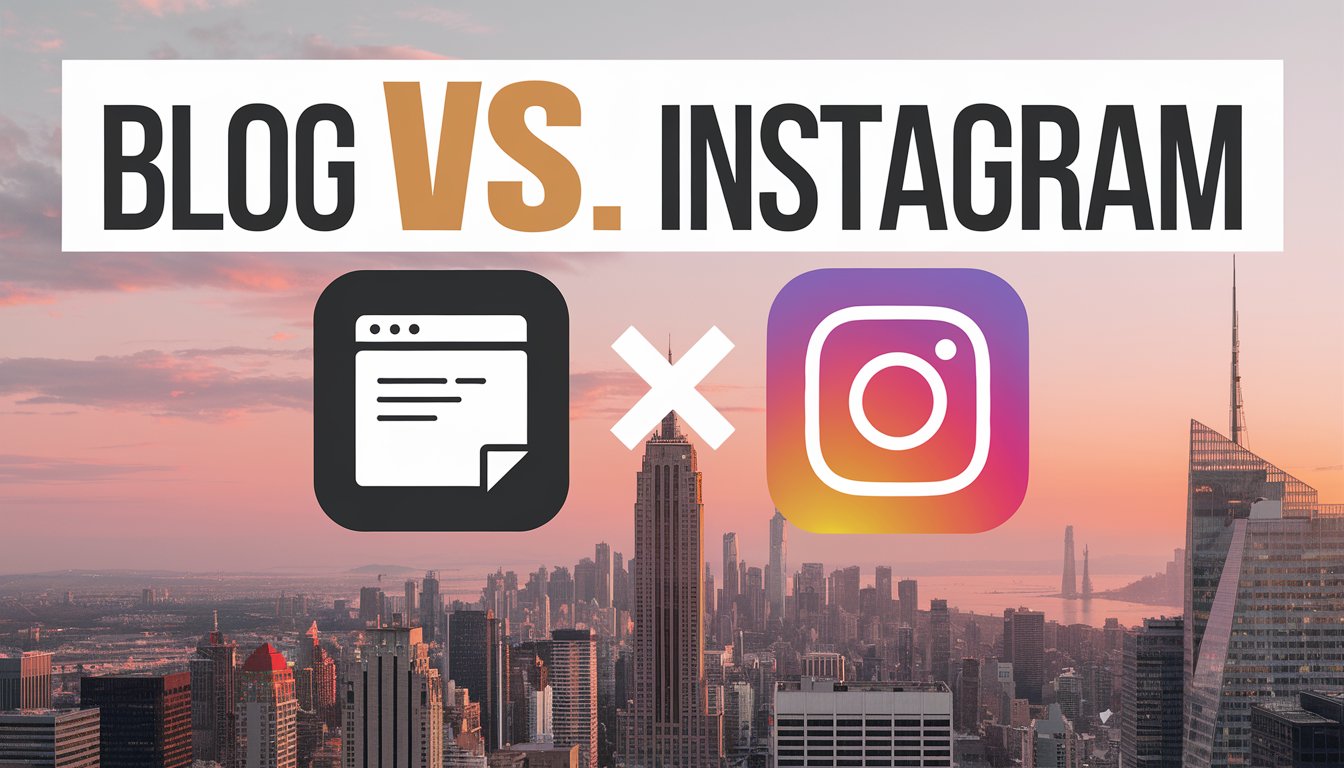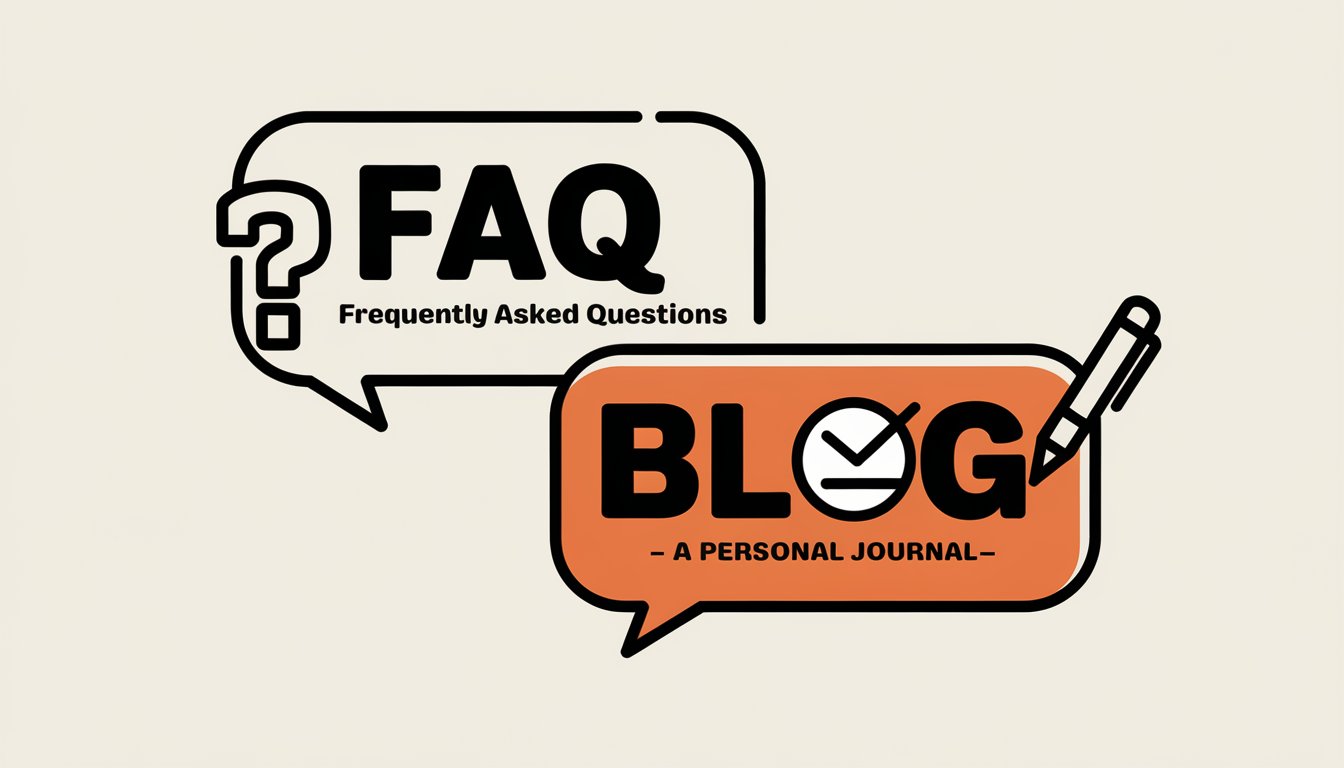Blog vs. Instagram: Choosing the Right Platform for Your Content
In today’s fast-paced digital landscape, content marketing is essential for building brand recognition and engaging your audience. With countless platforms available, how do you decide which one will elevate your strategy? Enter the ultimate face-off: Blog vs. Instagram.
Here’s an interesting stat: while creating an Instagram account takes seconds, 77% of internet users still regularly read blogs. This proves that blogs remain a powerful tool.
So, which platform is right for you? The answer lies in understanding the unique strengths of both. By leveraging the best of Blogs and Instagram, you can craft a content strategy that drives results and amplifies your brand. Let’s dive in!
The Importance of Content Platforms
Content platforms are key in digital marketing. Blogs and Instagram have different roles in your strategy. Blogs are great for detailed content and SEO. Instagram is all about visuals and making your brand known.
Recent stats show how important content platforms are. Eight out of 10 companies use social media to boost loyalty. A huge 94% of business leaders see social media as good for customer relationships.
Blogs offer long-term benefits. A good blog post can attract hundreds of visitors each month, which can lead to more traffic and income over time.

The Advantages of Blogging: Building a Strong Online Presence
Blogging is an effective way to establish a robust online presence. It allows you to dive deep into topics, showcase your expertise, and build a loyal audience.
Key Advantages of Blogging:
- SEO Benefits: Optimizing posts with the right keywords increases visibility and drives consistent traffic. A well-maintained blog can attract hundreds or thousands of visitors each month.
- Complete Ownership: Unlike social media, a blog gives you full control over design, content, and branding. It allows you to create a unique and lasting connection with your audience.
- Monetization Opportunities: Blogs offer multiple ways to generate income, including ads, affiliate marketing, and sponsored posts.
- Content Longevity: Blog posts have a long shelf life, remaining relevant for an average of 700 days, making them a valuable long-term resource.
This structure highlights the key advantages clearly while maintaining an engaging introduction.

The Power of Instagram: Visual Engagement and Reach
Instagram is a top choice for visual storytelling. It focuses on images and videos, making it great for brands to grab attention fast. Our brains process visuals 60,000 times quicker than text, giving Instagram an edge in social media.
Brands like Adidas and Nike have seen big wins on Instagram. Adidas’ ‘My Street’ campaign used amazing photos to connect with people. Nike’s ‘Just Do It’ campaign showed brand values through strong visuals. These examples show Instagram’s power in boosting brand personality and values.
Instagram’s mobile-first design means high-quality visuals are key. Videos keep viewers hooked more than still images, offering brands new ways to share their stories. Features like Stories and Reels add to the platform’s dynamic nature, boosting engagement.
Influencer marketing shines on Instagram. With over 1 billion monthly users, many are young adults.
In the end, whether to use blogs or Instagram depends on what you want to achieve and who you want to talk to. Blogs are great for detailed content and specific audiences. Instagram is better for reaching a wider audience and engaging with them visually. Using both could be the best way to market online.

Blogs: Your Powerhouse for In-Depth Content and SEO
Blogs are perfect for long, detailed content, in-depth topics, case studies, and guides. Unlike Instagram, blogs are better at sharing complex information and analysis.
Educational content does well on blogs. You can make step-by-step tutorials with clear headings. This makes it easy for readers to follow along, perfect for beginners. Blogs also help with learning by linking to other related content.
Blogs excel at SEO. They let you optimize for keywords and answer user questions, making them ideal for detailed, valuable content that ranks well online. Formats like listicles and reviews work well on blogs, boosting traffic and engagement.
Blogs are also good for showing your expertise. You can share industry news and lists of resources. This builds trust with your audience and shows you’re an expert in your field. With a blog, you can explore many content formats and give your readers a rich, informative experience.
Why Instagram Is a Must-Have Platform for Visual Content
Instagram is a leading platform for visual content, boasting 2 billion active users. It’s ideal for industries like fashion, food, travel, and lifestyle. It also offers a perfect space to showcase products and provide a glimpse into your world.
Features like Stories, Reels, and IGTV enable diverse ways to share content. This makes Instagram a powerful tool for storytelling through pictures and videos. Participating in trending topics and challenges can boost engagement, and for businesses focused on visuals, Instagram delivers excellent returns.
The platform’s user-friendly design makes content creation quick and straightforward. Success stories, like @michelle_janeen, with 68.5K followers, highlight how impactful Instagram can be — even without a blog. Analytics on follower growth provide clear metrics for tracking success.
For brands aiming to maximize visual impact, Instagram Reels are a game-changer, consistently driving the most comments and views.
Comparing Audience Reach: Which Platform Offers More?
Blogs and Instagram each have their own strengths when it comes to reaching people. Blogs are great at finding and talking to specific groups of people. They’re especially good at reaching users aged 40-60, making them perfect for detailed content.
Instagram, however, can reach a wider range of people. It’s very popular with the younger crowd, giving brands a chance to connect with many different users. In 2024, Instagram’s reach rate is 4.00%, beating Facebook’s 2.60%. It also makes it easier to grow your followers and get people to interact with your content.
Instagram’s visual nature can really help brands reach their target audience. Its engagement rate is 3.50%, much higher than Facebook’s 1.20%. But, Instagram’s reach rate has dropped by 18% in a year. This shows how important it is to have a good mix of content.

Engagement Metrics: How To Measure Success
Measuring success on blogs and Instagram requires a sharp eye on engagement metrics. Analytics help track how well content performs and guide what to post next. On Instagram, key metrics are follower growth, engagement per follower, and reach.
Instagram Insights provides data on account reach, engagement, and who follows you. People spend an average of 29.7 minutes daily on Instagram, making it key for brands to monitor their performance metrics. 68% of brands think Instagram will bring them positive ROI in 2024.
For blogs, important metrics are page views, time on page, and shares. Comments and likes show if people are interested and if the content is relevant. Analytics tools track these, helping to make content better.
Checking these metrics often helps improve strategies and grow a more engaged audience. By focusing on these metrics, brands can better understand their audience, improve their content, and see success on both blogs and Instagram.

Content Frequency: How Often Should You Post?
Building a strong online presence requires tailoring your posting frequency to the platform. On Instagram, posting 3-5 times per week on the feed, daily Stories, and 4-7 Reels weekly keeps content fresh and engaging. Larger accounts scale up their activity.
In contrast, blogs thrive on quality over quantity, with 1-2 in-depth posts weekly offering long-term value and evergreen potential. While Instagram content has a short lifespan and requires frequent updates to maintain visibility, blog posts focus on providing lasting insights. Together, these approaches balance short-term engagement with long-term audience growth.
User Experience: Which Platform Is More User-Friendly?
Instagram and blogging platforms have different user experiences. Instagram is easy to use, making it simple to share photos quickly. Its design is straightforward and perfect for those who like to post fast.
Blogging platforms like WordPress offer more control. They might be harder to learn, but they let you customize your site a lot. Setting up your first blog can seem tough, but it unlocks many creative options.
Instagram is great for mobile users, with over 2 billion active users. Blogging platforms are better for writing on a computer, allowing for longer posts. Your choice depends on what you want to do and how comfortable you are with technology.
Monetization Strategies: Which Platform Pays Off?
Monetization options differ across platforms, affecting creators’ earnings. Blogs offer various ways to make money, like ad revenue, affiliate marketing, and sponsored content. Creators can also sell products or services directly, providing a steady income.
Instagram focuses mainly on sponsored posts and affiliate marketing. Influencers with big followings can make thousands per post, but success often depends on having a large audience. TikTok and Instagram have different ways to make money, each with its own challenges and opportunities.
Other platforms offer more ways to make money. YouTube’s Partner Program lets creators earn from ads and memberships. Medium and Substack have subscription models for writers. Patreon allows for monthly subscriptions for exclusive content. Thinkific and Teachable let creators sell online courses.
Yet, making a living as a content creator is tough. Only 12% of full-time creators earn over $50,000 a year, with 46% making less than $1,000. For part-time creators, 68% earn under $1,000. Choosing the right niche can greatly affect earnings across platforms.
In comparison, social media platforms demand constant updates to stay relevant amidst evolving trends. Blogs, however, offer a stable platform for creating evergreen content. This stability, combined with their potential for lasting impact, makes blogging an excellent choice for sustained online success.
Persistence and Longevity: Which Platform Lasts?
When it comes to longevity, blogs are the undisputed champions. Evergreen content on blogs remains effective for over two years, far surpassing the fleeting lifespan of social media posts.
For instance, Instagram posts have a lifespan of roughly 21 hours, with half of their engagement occurring in the first six hours. Facebook posts fare only slightly better, staying visible for about six hours on the newsfeed. In contrast, blog posts can continue attracting visitors and providing value for months or even years.
The long lifespan of blog content is a significant advantage for creators. It helps build a robust online presence while allowing for updates and refinements to older posts. This not only enhances SEO but also draws in more visitors over time. Though blogging may start slow, its enduring benefits make it a worthwhile investment.
But what about those moments when creators wonder, When is it time to quit blogging? For many, the answer lies in evaluating strategy, niche relevance, and the ability to sustain long-term engagement. While blogging offers stability and opportunities for evergreen content, creators must occasionally reevaluate their goals and adapt to shifting trends.
Final Thoughts: Picking the Right Platform for Your Goals
Choosing the right platform for your content depends on your marketing goals and strategy. Blogs are great for detailed content and SEO. Instagram is perfect for visual engagement. Your choice should match your audience and business aims.
Think about your resources when planning your content. Blogs require regular writing but offer lasting value. Instagram requires stunning visuals and frequent updates. Using both platforms can help you reach more people and better engage them.
Your content strategy should be flexible. Always check your performance and tweak your plan as needed. This way, you keep your marketing goals in sight. By picking the right platform for your goals, you’ll create content that connects with your audience and achieves results.
Still deciding between a blog and Instagram? Dive deeper into the unique strengths of both platforms and how to leverage them for your content strategy. Explore more insights and tips on creating a sustainable online presence at After Social. Start exploring today!





